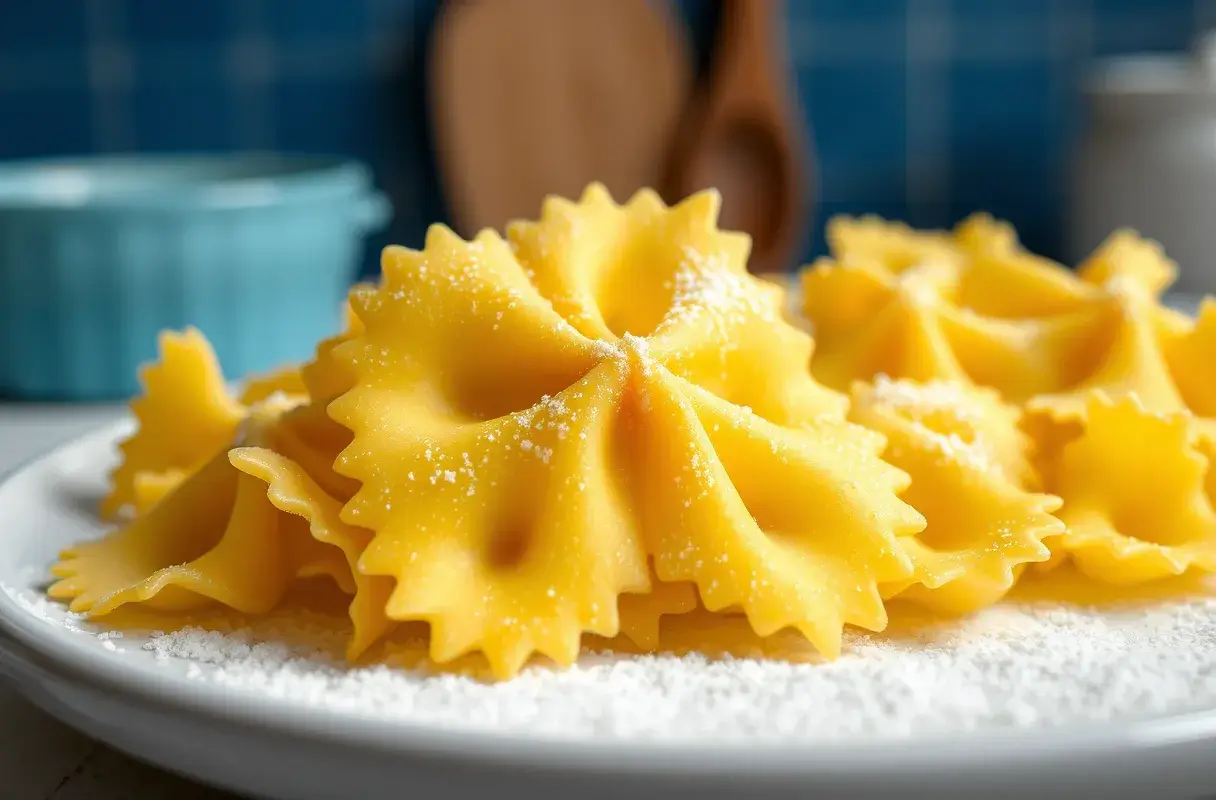When learning about Italian cuisine, mastering proper pronunciation can make the dining experience more authentic and enjoyable. Pasta enthusiasts often ask: How do you pronounce farfalle in Italian? In Italian, you say “far-FAHL-leh,” with the emphasis on the second syllable.. Because farfalle is one of Italy’s most cherished pasta shapes, pronouncing farfalle correctly can add a touch of respect and flair to your culinary vocabulary.
How Is Farfalle Pronounced in Italian?, known for its whimsical bow-tie shape, delightful texture, and versatility, is a favorite ingredient in countless recipes. Therefore, understanding its proper pronunciation can help you feel more confident when discussing dishes with friends, family, or even while traveling in Italy.
How is farfalle pronounced in Italian? In this comprehensive guide, we will explain how to pronounce farfalle in Italian. In addition, we will explore its rich history, cultural significance, and best cooking practices. We will also provide practical tips for using farfalle in a wide range of dishes. By the end, you will feel more informed about this charming pasta and ready to incorporate it into your meals with confidence.
What Does Farfalle Mean?
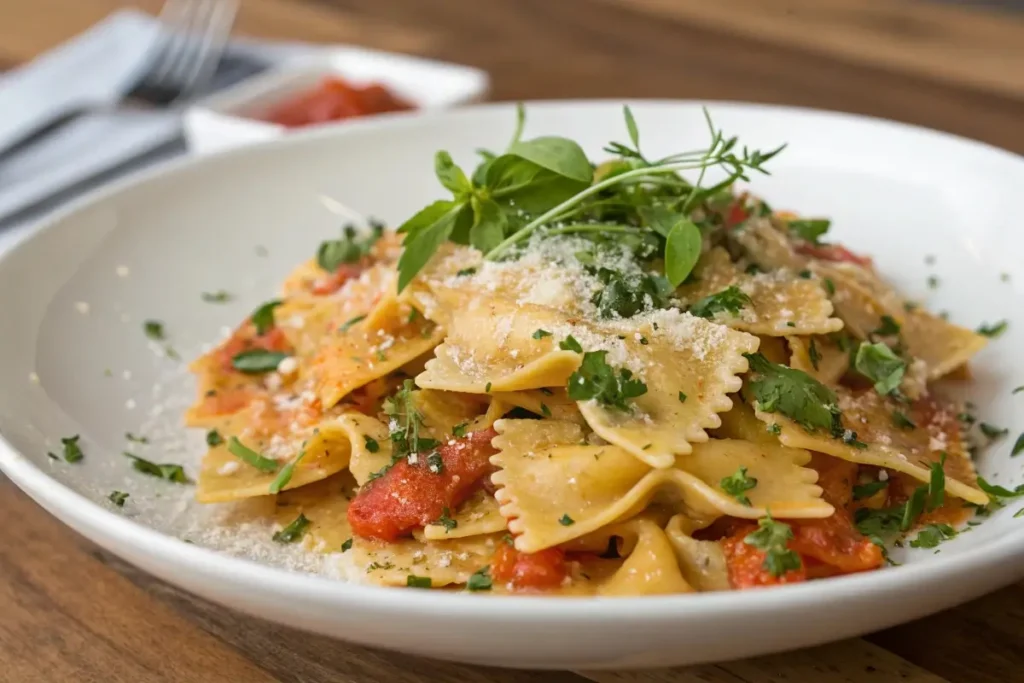
Before focusing on pronunciation, it helps to understand the meaning behind the name. The word farfalle comes from the Italian term for “butterflies.” Unsurprisingly, the name perfectly fits the shape of the pasta, which resembles the wings of a butterfly gently pinched in the middle. This cheerful imagery makes farfalle visually appealing and instantly recognizable. Moreover, the word itself gives you a hint about how graceful and delicate this pasta can be on the plate.
Unlike some pasta shapes that have more functional names, farfalle’s name encourages people to think of nature and lightness. As a result, many cooks appreciate this pasta not only for its taste and texture but also for the uplifting feeling its name and form bring to the table.
Origins of Farfalle
Farfalle’s history stretches back to the 16th century. During that time, it originated in Northern Italy, especially in the regions of Emilia-Romagna and Lombardy. These areas are well known for their rich culinary traditions, so it is not surprising that they gave birth to such a delightful pasta shape.
Originally, farfalle was made by hand. Homemakers would roll out fresh pasta dough, cut it into small squares or rectangles, and then pinch the centers to create the distinctive bow-tie shape. This simple method turned basic dough into a pasta that could hold sauces in its creases and folds. Over time, farfalle’s popularity spread throughout Italy and then across the world.
Today, farfalle is mass-produced by many pasta companies, making it easily accessible in grocery stores worldwide. Even so, it still carries the charm of its handmade roots and the warmth of Italian tradition.
How is farfalle pronounced in Italian?
Now that we understand the name and history, it is time to address the main question: How is farfalle pronounced in Italian? While it might seem tricky at first, breaking down the word into syllables makes it much easier. The correct Italian pronunciation is:
far-FAHL-leh
To pronounce it more clearly:
- Far: Say this part just like the English word “far,” stretching the “a” sound slightly.
- Fahl: The second syllable uses an “ah” sound, similar to the “a” in “father.” This is the stressed syllable, so say it with a bit more emphasis.
- Leh: End with a soft “eh” sound, similar to the “e” in “met.”
Putting it all together, the emphasis falls on the middle syllable, making the overall sound smooth and pleasant to the Italian ear.
Common Pronunciation Mistakes ( Pronounce farfalle )
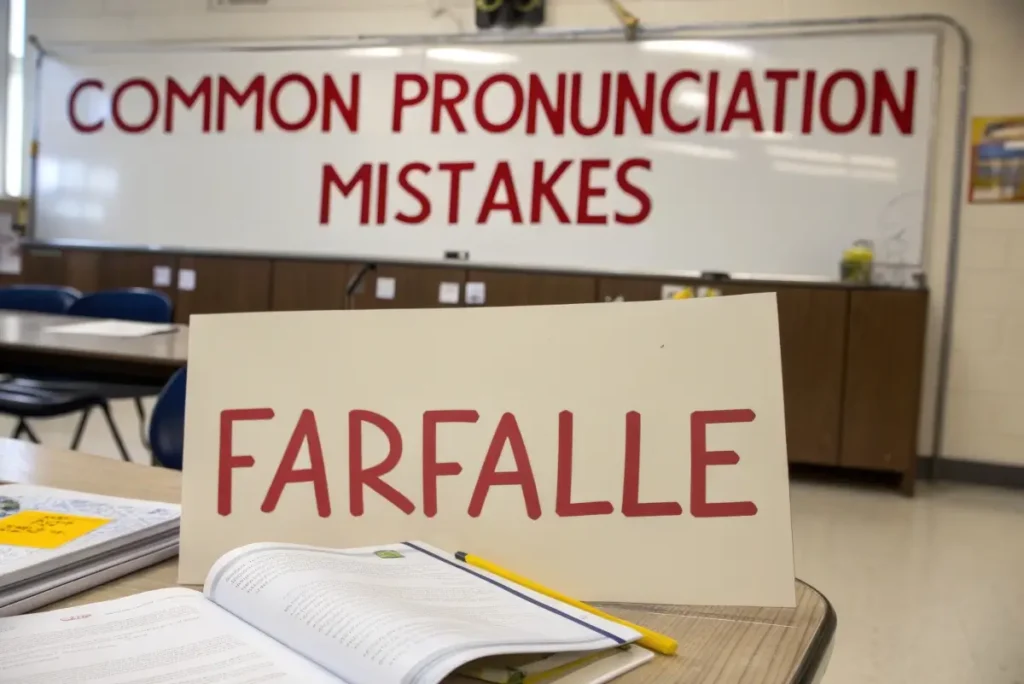
Although pronouncing farfalle is not overly complicated, a few common mistakes do occur. By knowing these errors, you can avoid them:
- Omitting the Final “e”: Some English speakers tend to drop the final “e,” saying something like “far-fall” instead of “far-FAHL-leh.” Remember that the last “e” in Italian is usually pronounced, although softly.
- Stress on the Wrong Syllable: Another common mistake is placing the emphasis on the first or last syllable. Make sure the stress is on the second syllable—FAHL—giving it a gentle yet clear accent.
- Misreading the Vowels: Italian vowels have more consistent sounds than English ones. Practice saying “ah” and “eh” out loud to get comfortable with these vowel sounds.
Why Farfalle pronunciation Matters
You might wonder why correctly pronouncing farfalle is important. After all, many people recognize the pasta shape no matter how you say it. However, there are several reasons why proper pronunciation matters:
- Cultural Respect: Italian cuisine places great value on tradition and authenticity. By taking the time to pronounce farfalle correctly, you show respect for the culture and its culinary heritage.
- Improved Dining Experience: When you pronounce the name of a dish correctly, you enhance the overall dining experience. If you visit an Italian restaurant, the staff may appreciate your effort, and you may feel more confident ordering.
- Clear Communication: Proper pronunciation helps avoid confusion. For instance, if you are asking someone for cooking tips or discussing a recipe, saying the name correctly ensures that everyone is on the same page.
Cultural Significance of Italian farfalle
Farfalle is not merely a pasta shape; it also carries cultural significance. In Italy, pasta shapes often tell stories of specific regions and reflect the local ingredients and traditions. Although farfalle did not originate from a single village, its Northern roots connect it to places known for rich and hearty dishes.
Furthermore, Italian cuisine values simplicity and quality. Because farfalle’s shape is so suited to capturing flavors, it aligns well with the Italian approach of using quality ingredients and letting them shine. By respecting the correct pronunciation, you are also acknowledging the cultural depth that underlies each dish.
Culinary Uses of Italian farfalle
Farfalle’s unique shape is more than decorative. Its pinched center and broad wings help it hold onto different types of sauces. This allows for versatility in the kitchen. Indeed, farfalle shines with a wide range of preparations, from creamy sauces to vibrant salads. Consider the following uses:
- Creamy Sauces: Farfalle pairs beautifully with Alfredo, mushroom cream sauce, or a light tomato cream sauce. The folds of the pasta trap the sauce, ensuring each bite is full of flavor.
- Tomato-Based Sauces: Marinara, arrabbiata, or a simple garlic and olive oil sauce can work wonders with farfalle. Because the pasta’s shape catches bits of tomato and herbs, you get a wonderful balance of taste and texture.
- Pesto Pastas: Basil pesto or sun-dried tomato pesto cling nicely to farfalle’s ridges, making every forkful aromatic and delicious.
- Vegetable-Based Dishes: For a lighter meal, toss farfalle with seasonal vegetables—such as zucchini, cherry tomatoes, broccoli, or spinach—and a drizzle of olive oil.
- Protein Pairings: Farfalle works well with chicken, shrimp, or sautéed mushrooms. Consider a simple dish of farfalle tossed with grilled chicken pieces, broccoli florets, and a touch of Parmesan cheese.
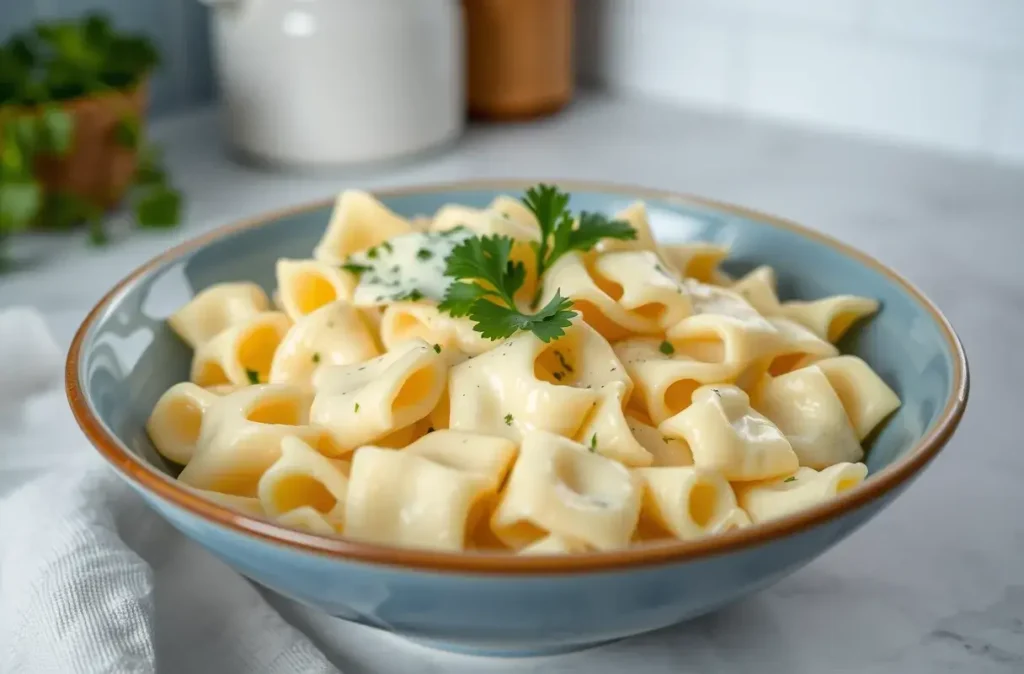
Farfalle in Salads and Soups
In addition to hot dishes, farfalle is a wonderful choice for cold salads and soups. Its sturdy shape and pleasant chew stand up well in these preparations:
- Pasta Salads: Farfalle is often used in pasta salads mixed with olives, feta cheese, cherry tomatoes, and a light vinaigrette. Because it can be chilled without losing its structure, it is ideal for picnics or potlucks.
- Light Soups: In soups, farfalle adds a visual element that makes each spoonful interesting. Try it in a clear vegetable broth or a light chicken soup for a comforting meal.
How to Cook Farfalle Perfectly
Although cooking farfalle may seem simple, following a few guidelines ensures a perfect outcome:
- Boil Plenty of Water: Fill a large pot with 4–6 quarts of water per pound of pasta. Having enough water prevents the farfalle from sticking together.
- Season the Water: Add a generous pinch of salt to the water once it reaches a rolling boil. In doing so, you season the pasta from the inside out.
- Cook Al Dente: Follow the package instructions for cooking time, usually around 10–12 minutes. Taste a piece before draining to ensure it is al dente, meaning firm but not hard.
- Drain and Toss: Drain the cooked farfalle and toss it with your chosen sauce immediately. Doing this helps the sauce adhere to the pasta, creating a cohesive dish.
Pro Tips for Cooking Farfalle
- Stir Occasionally: Gently stir the pasta while it cooks to prevent it from clumping.
- Reserve Some Pasta Water: Before draining, scoop out a cup of starchy cooking water. This liquid can help adjust the sauce’s consistency if it seems too thick.
- Do Not Rinse with Cold Water (For Hot Dishes): Unless you are making a pasta salad, avoid rinsing the pasta. Rinsing washes away the starch that helps sauces stick.
Nutritional Information
Although farfalle is not a superfood, it can fit into a balanced diet. Here is a rough nutritional profile for 1 cup of cooked farfalle:
| **Nutrient | Amount Per Serving (1 cup cooked)** |
|---|---|
| Calories | ~200 |
| Carbohydrates | ~42g |
| Protein | ~7g |
| Fat | ~1g |
| Fiber | ~2g |
| Iron | ~10% DV |
To make your meal more nutritious, consider pairing farfalle with lean protein, fresh vegetables, and a drizzle of heart-healthy olive oil.
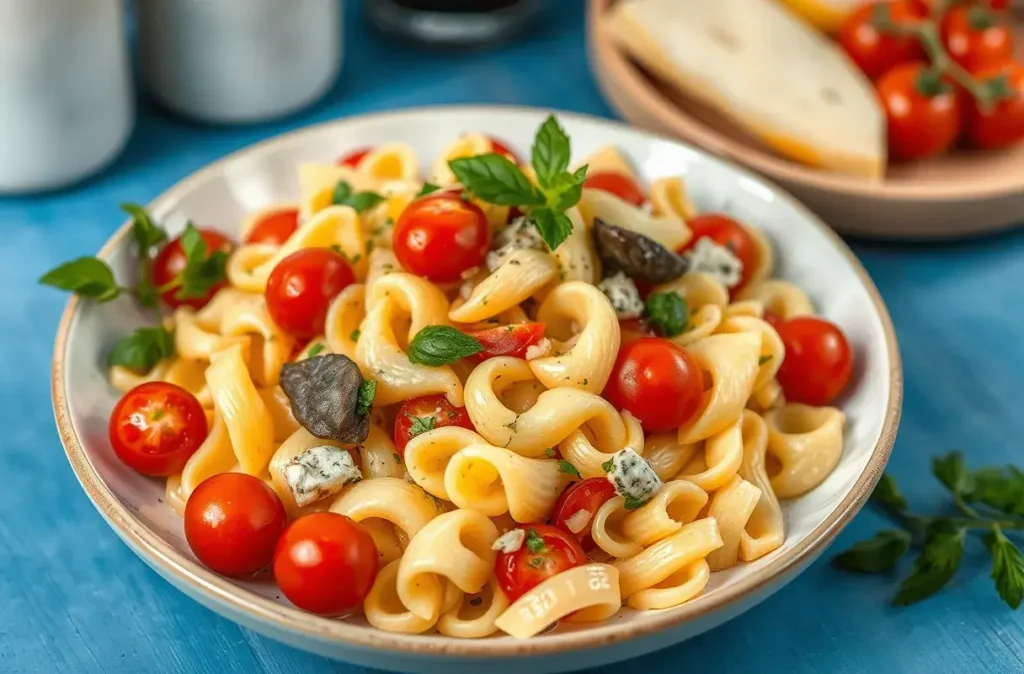
FAQs How is farfalle pronounced in Italian?
How is farfalle pronounced in Italian?
As explained, farfalle is pronounced far-FAHL-leh, with the emphasis on the second syllable and a soft final “e.”
What dishes work best with farfalle?
Farfalle is extremely versatile. It works well in creamy sauces, tomato-based sauces, pesto dishes, salads, and soups. In other words, you can use it in countless ways to suit your taste.
Is Farfalle the Same as Bow Tie Pasta?
Yes, farfalle and bow-tie pasta are essentially the same. The Italian term farfalle means “butterflies,” and the English “bow tie” is a more literal description of its shape Read the Full Article.
What Do Italians Use Farfalle For?
Italians use farfalle in a range of dishes. Creamy sauces like Alfredo or a simple butter and sage sauce are popular, as are lighter, oil-based preparations or chilled pasta salads Read the Full Article.
Farfalle vs. Other Pasta Shapes
You might wonder how farfalle compares to other pasta shapes. Although many shapes hold sauce well, each one offers a slightly different experience:
- Penne: Penne is tube-shaped and great for capturing sauce inside its hollow center. However, it does not have the butterfly-like design that makes farfalle visually distinctive.
- Fusilli (Rotini): Fusilli’s corkscrew shape also clings to sauces. Yet farfalle’s flat wings and pinched middle provide a different bite and texture.
- Orecchiette: Orecchiette, meaning “little ears,” form small cups that hold sauce. Still, they do not offer the playful look and feel of farfalle’s bow ties.
By trying various pasta shapes, you can discover which one you prefer for each type of dish. Nonetheless, farfalle stands out due to its name, shape, and versatility.
Serving Suggestions and Meal Ideas
If you want to add farfalle to your weekly meal rotation, consider these simple ideas:
- Weeknight Dinner: Toss cooked farfalle with olive oil, garlic, cherry tomatoes, and spinach. Top with grated Parmesan for a quick and light meal.
- Special Occasion Dish: Impress guests by preparing farfalle with a creamy mushroom sauce and sautéed shrimp. The beautiful shape of the pasta elevates the presentation.
- Healthy Lunch Prep: Prepare a farfalle pasta salad on Sunday and store it in the fridge. Throughout the week, enjoy it for lunch, mixing in fresh vegetables, herbs, and a light dressing.
- Kid-Friendly Meal: Serve farfalle with a simple tomato sauce and a sprinkle of mozzarella. Its bow-tie shape can make the meal more fun and encourage kids to eat their dinner happily.
Conclusion: How is farfalle pronounced in Italian?
In conclusion, understanding how farfalle is pronounced in Italian—far-FAHL-leh—not only helps you communicate more effectively but also deepens your appreciation for one of Italy’s most charming pasta shapes. Although farfalle’s shape, taste, and versatility make it a staple in kitchens worldwide, pronouncing it correctly adds that extra layer of authenticity and respect.
Whether you serve farfalle in a creamy Alfredo sauce, toss it into a bright summer salad, or pair it with roasted vegetables, remember that you are enjoying a pasta with centuries of history and cultural significance behind it. By taking the time to learn its proper pronunciation and understanding its culinary potential, you celebrate Italian culture, embrace tradition, and make every meal a bit more special.
